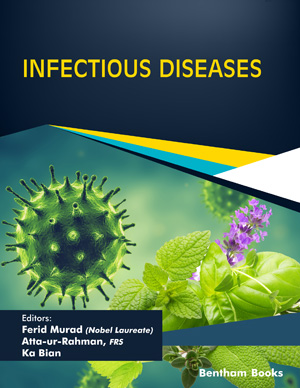
Abstract
Endothelial dysfunction, impaired implantation and placental insufficiency have been identified as mechanisms behind the development of pre-eclampsia, resulting in angiogenic factors’ alteration. Angiogenic imbalance is also associated with congenital heart defects, and this common physiologic pathway may explain the association between them and pre-eclampsia. This review aims to understand the physiology shared by these two entities and whether women with pre-eclampsia have an increased risk of fetal congenital heart defects (or the opposite). The present research has highlighted multiple vasculogenic pathways associated with heart defects and preeclampsia, but also epigenetic and environmental factors, contributing both. It is also known that fetuses with a prenatal diagnosis of congenital heart disease have an increased risk of several comorbidities, including intrauterine growth restriction. Moreover, the impact of pre-eclampsia goes beyond pregnancy as it increases the risk for following pregnancies and for diseases later in life in both offspring and mothers. Given the morbidity and mortality associated with these conditions, it is of foremost importance to understand how they are related and its causative mechanisms. This knowledge may allow earlier diagnosis, an adequate surveillance or even the implementation of preventive strategies.
Keywords: Placenta, trophoblastic invasion, pre-eclampsia, congenital heart defects, gestational hypertension, diagnosis.
Graphical Abstract
[http://dx.doi.org/10.1111/ppe.12252] [PMID: 26479038]
[http://dx.doi.org/10.3389/fphys.2018.01045] [PMID: 30131711]
[http://dx.doi.org/10.1161/CIRCULATIONAHA.117.028816] [PMID: 28674092]
[http://dx.doi.org/10.1002/uog.20149] [PMID: 30334326]
[http://dx.doi.org/10.1016/j.ejogrb.2005.07.006] [PMID: 16137818]
[http://dx.doi.org/10.1002/bdr2.1430] [PMID: 30576091]
[http://dx.doi.org/10.1161/CIRCULATIONAHA.116.024600] [PMID: 28424221]
[http://dx.doi.org/10.1016/j.ydbio.2016.12.013] [PMID: 27940158]
[http://dx.doi.org/10.3389/fphys.2018.00629] [PMID: 29997513]
[http://dx.doi.org/10.1093/eurheartj/eht389] [PMID: 24159191]
[http://dx.doi.org/10.3109/14767058.2015.1121480] [PMID: 26744775]
[http://dx.doi.org/10.1093/eurheartj/eht485] [PMID: 24302271]
[http://dx.doi.org/10.1152/ajpheart.00641.2016] [PMID: 28062416]
[PMID: 23691322]
[http://dx.doi.org/10.1007/s10456-005-9007-8] [PMID: 16211358]
[http://dx.doi.org/10.1016/j.placenta.2010.01.002]
[http://dx.doi.org/10.1002/uog.18936] [PMID: 29057564]
[http://dx.doi.org/10.3109/14767058.2011.597900] [PMID: 21823904]
[http://dx.doi.org/10.1542/peds.2006-2742] [PMID: 17387169]
[http://dx.doi.org/10.1159/000330202] [PMID: 21849766]
[http://dx.doi.org/10.1016/j.earlhumdev.2014.09.009] [PMID: 25463832]
[http://dx.doi.org/10.1016/j.ahj.2012.11.013] [PMID: 23537971]
[http://dx.doi.org/10.1016/j.gyobfe.2014.07.002] [PMID: 25164160]
[http://dx.doi.org/10.1016/S1028-4559(10)60015-0] [PMID: 20466299]
[http://dx.doi.org/10.1007/s002460010089] [PMID: 10865022]
[http://dx.doi.org/10.1159/000010323] [PMID: 11093045]
[http://dx.doi.org/10.1002/pd.5515] [PMID: 31254468]
[http://dx.doi.org/10.1007/s00246-013-0702-8] [PMID: 23591803]
[http://dx.doi.org/10.3389/fphys.2018.00373] [PMID: 29706899]
[PMID: 31533099]
[PMID: 30152840]
[http://dx.doi.org/10.1002/uog.6272] [PMID: 19086000]
[http://dx.doi.org/10.1016/j.preghy.2019.09.001] [PMID: 31525709]
[http://dx.doi.org/10.1016/j.ajog.2019.07.025] [PMID: 31336074]
[http://dx.doi.org/10.1136/bmjopen-2018-024331] [PMID: 30257849]
[http://dx.doi.org/10.1089/ars.2008.2303] [PMID: 19125611]
[http://dx.doi.org/10.1017/S204017441900014X] [PMID: 30968806]
[http://dx.doi.org/10.1291/hypres.27.911] [PMID: 15894830]
[http://dx.doi.org/10.1088/0967-3334/25/5/002] [PMID: 15535177]
[http://dx.doi.org/10.3389/fneur.2019.00816] [PMID: 31447757]
[http://dx.doi.org/10.1002/uog.7450] [PMID: 19827117]
[PMID: 26381715]
[http://dx.doi.org/10.1017/S2040174420000094] [PMID: 32070456]
[http://dx.doi.org/10.1016/j.ajog.2019.07.024] [PMID: 31336073]
[http://dx.doi.org/10.1542/peds.2007-1519] [PMID: 18381510]
[http://dx.doi.org/10.1038/oby.2003.146] [PMID: 12972676]
[http://dx.doi.org/10.1016/S0378-3782(00)00125-0] [PMID: 11223271]
[http://dx.doi.org/10.1016/j.numecd.2010.07.016]
[http://dx.doi.org/10.1007/s11906-017-0781-7] [PMID: 28986756]
[http://dx.doi.org/10.1095/biolreprod.115.135780] [PMID: 26792940]
[http://dx.doi.org/10.3389/fped.2017.00069] [PMID: 28451583]
[http://dx.doi.org/10.1017/S2040174416000209] [PMID: 27168118]
[http://dx.doi.org/10.1016/j.placenta.2017.08.070] [PMID: 28962690]
[http://dx.doi.org/10.1161/HYPERTENSIONAHA.110.157743] [PMID: 20956732]
[http://dx.doi.org/10.1186/s13148-017-0349-z] [PMID: 28503212]
[http://dx.doi.org/10.1177/1099800413508645] [PMID: 24165327]
[http://dx.doi.org/10.1161/JAHA.116.003906] [PMID: 27799232]
[http://dx.doi.org/10.1016/j.nwh.2016.07.003] [PMID: 27520604]
[http://dx.doi.org/10.1007/s11906-014-0475-3] [PMID: 25097112]
[http://dx.doi.org/10.1016/j.atherosclerosis.2004.04.026] [PMID: 15306192]
[http://dx.doi.org/10.1007/s00281-016-0579-8] [PMID: 27339196]
[http://dx.doi.org/10.1111/1471-0528.14702] [PMID: 28432737]
[http://dx.doi.org/10.1016/j.preghy.2012.05.006] [PMID: 26105602]
[http://dx.doi.org/10.1089/jwh.2015.5414] [PMID: 26779584]
[PMID: 32004410]
[http://dx.doi.org/10.1016/j.amjmed.2018.11.029] [PMID: 30550756]
[http://dx.doi.org/10.1007/978-3-319-77932-4_28] [PMID: 30051401]
[http://dx.doi.org/10.1111/aogs.12629] [PMID: 25753566]
[http://dx.doi.org/10.1136/bmj.k5287] [PMID: 30700415]
[http://dx.doi.org/10.1016/j.ijcard.2019.01.097] [PMID: 30773269]
[http://dx.doi.org/10.1080/14767058.2017.1409718] [PMID: 29172831]
[http://dx.doi.org/10.1016/j.jacc.2018.12.092] [PMID: 31023435]
[http://dx.doi.org/10.1159/000487646] [PMID: 29627841]
[http://dx.doi.org/10.1016/j.preghy.2018.12.004] [PMID: 30825935]
[http://dx.doi.org/10.1089/jwh.2018.7480] [PMID: 31408425]
[http://dx.doi.org/10.1097/HJH.0b013e32833a39d0] [PMID: 20467325]
[http://dx.doi.org/10.1007/s11906-019-0999-7] [PMID: 31776692]
[http://dx.doi.org/10.3109/00016349.2010.519378] [PMID: 20955103]
[http://dx.doi.org/10.3390/jcm6080076] [PMID: 28749442]
[http://dx.doi.org/10.1016/j.ogc.2019.04.009] [PMID: 31378292]
[http://dx.doi.org/10.1093/epirev/mxt006] [PMID: 24025350]
[http://dx.doi.org/10.1016/j.ccl.2019.04.008] [PMID: 31279428]
[http://dx.doi.org/10.1161/CIRCULATIONAHA.118.036748] [PMID: 30779636]
[http://dx.doi.org/10.1016/j.jogc.2018.10.024] [PMID: 30655227]
[http://dx.doi.org/10.1007/978-1-4939-7498-6_6] [PMID: 29196995]
[http://dx.doi.org/10.1038/hr.2017.100] [PMID: 29093561]
[http://dx.doi.org/10.3390/ijms21031162] [PMID: 32050556]
[http://dx.doi.org/10.5830/CVJA-2017-031] [PMID: 28906533]
[http://dx.doi.org/10.1016/j.ajog.2020.02.043] [PMID: 32142824]
[http://dx.doi.org/10.1016/j.ajog.2013.07.030] [PMID: 23911383]
[http://dx.doi.org/10.1016/j.ajog.2016.02.003] [PMID: 26874301]
[http://dx.doi.org/10.1161/HYPERTENSIONAHA.119.14221] [PMID: 32008431]
[http://dx.doi.org/10.1111/1471-0528.15394] [PMID: 29978553]
[http://dx.doi.org/10.1053/j.semperi.2014.03.003] [PMID: 24836826]
[PMID: 27526556]
[http://dx.doi.org/10.1590/S0101-28002012000100015] [PMID: 22441189]
[http://dx.doi.org/10.1042/CS20171366] [PMID: 29295950]
[http://dx.doi.org/10.3109/10641955.2015.1090581] [PMID: 26636247]
[http://dx.doi.org/10.1093/rheumatology/kew043] [PMID: 27016663]
[http://dx.doi.org/10.1111/apa.14813] [PMID: 30964948]
[http://dx.doi.org/10.1016/j.ajpath.2015.06.020] [PMID: 26362067]


















